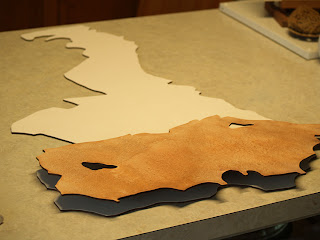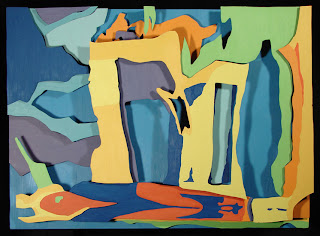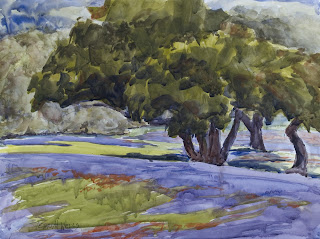

You are seeing the completed “In God’s Paint Box” wall sculpture that I started with a watercolor sketch in a canyon out west. (see post 2) With the newly reworked pieces, it produces the experience I was hoping for. This version is 3 feet by 2 feet, solidly built, lovely, and saleable.
One of you wrote that you were a bit confused by my “Chaos or Order” post. To be clearer, my work is about capturing and reproducing the full experience of a particular location. Not an overwhelmed first response to what seems chaotic, but a response fully connected with the place, its movement, color, and shapes. There is an order underlying the chaos we see in the world, and sometimes through just waiting, experiencing, viewing deeply, prayer, and pondering we get the joy of understanding.
Will there be other versions of this sculpture? I want to construct another where the largest piece on the bottom would be about 7 feet across. The viewer would look forward when approaching the bottom piece of the sculpture and then up the wall as I did in the canyon. I’d also like to construct a version of it in a material and size that can be used outdoors. Perhaps a new version will be commissioned in the future.


















